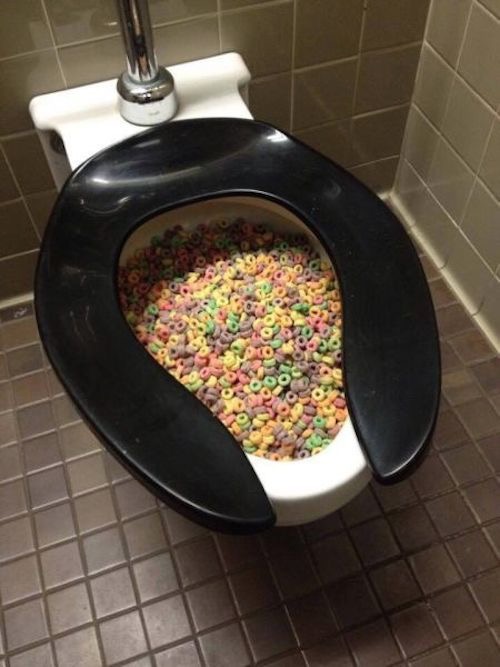Can You to Flush Food in the Toilet?
Can You to Flush Food in the Toilet?
Blog Article
Just how do you really feel in regards to Flushing Food Down the Toilet??

Introduction
Lots of people are frequently faced with the problem of what to do with food waste, particularly when it concerns leftovers or scraps. One common question that develops is whether it's fine to flush food down the commode. In this short article, we'll delve into the reasons that people may consider flushing food, the effects of doing so, and different techniques for correct disposal.
Reasons people may take into consideration purging food
Absence of awareness
Some individuals might not know the prospective injury caused by flushing food down the toilet. They might erroneously think that it's a safe method.
Convenience
Purging food down the commode may look like a quick and easy remedy to throwing away unwanted scraps, especially when there's no close-by trash bin readily available.
Negligence
In some cases, people might simply select to flush food out of large laziness, without taking into consideration the consequences of their actions.
Effects of flushing food down the toilet
Ecological effect
Food waste that winds up in rivers can contribute to contamination and injury marine communities. Furthermore, the water made use of to flush food can strain water resources.
Plumbing concerns
Purging food can bring about clogged pipelines and drains, causing costly plumbing repairs and aggravations.
Kinds of food that must not be purged
Fibrous foods
Foods with fibrous textures such as celery or corn husks can get entangled in pipes and create blockages.
Starchy foods
Starchy foods like pasta and rice can absorb water and swell, resulting in blockages in pipes.
Oils and fats
Greasy foods like bacon or food preparation oils should never be flushed down the bathroom as they can strengthen and cause obstructions.
Appropriate disposal approaches for food waste
Using a waste disposal unit
For homes outfitted with waste disposal unit, food scraps can be ground up and flushed through the pipes system. Nonetheless, not all foods appropriate for disposal in this fashion.
Recycling
Particular food product packaging products can be recycled, reducing waste and reducing environmental influence.
Composting
Composting is an eco-friendly way to throw away food waste. Organic materials can be composted and made use of to improve soil for horticulture.
The importance of correct waste administration
Decreasing environmental injury
Appropriate waste management techniques, such as composting and recycling, assistance reduce pollution and protect natural resources for future generations.
Protecting plumbing systems
By staying clear of the method of flushing food down the toilet, home owners can protect against costly plumbing fixings and keep the stability of their plumbing systems.
Final thought
Finally, while it may be tempting to flush food down the commode for benefit, it is necessary to understand the possible effects of this activity. By embracing correct waste monitoring techniques and dealing with food waste sensibly, individuals can add to healthier plumbing systems and a cleaner environment for all.
FLUSH FOOD DOWN THE TOILET?
FLUSHING FOOD CAN CAUSE BLOCKED DRAINS IN YOUR HOME
All of the plumbing fixtures in your home are connected to the same sewer pipe outside of your home. This outdoor sewer pipe is responsible for transporting all the wastewater from your home to the Council sewer mains. Even small pieces of food that go down the kitchen sink can cause problems for your sewer. It should therefore be obvious that flushing larger bits of food, such as meat, risks a clog in either the toilet itself or the sewer pipes. Flushing greasy food is even more problematic because oil coagulates when it cools, coating the interior lining of your pipes.
THE TOILET IS NOT A BIN
Food isn’t the only thing that people shouldn’t be flushing down the toilet. People use the toilet to dispose of all kinds of things such as tampons, makeup wipes, dental floss, kitty litter and even underwear. Water goes to great lengths to educate residents about the high costs and stress placed on wastewater treatment systems simply from people flushing the wrong stuff down the toilet. It costs taxpayers millions of dollars each year, and homeowners thousands in blocked drain repairs.
FLUSHING FOOD IS A WASTE OF WATER
Flushing food is a waste of our most precious resource - water. In June this year Level 1 water restrictions were introduced to protect water supply from drought conditions. Much of New South Wales continues to be affected by prolonged drought with recent figures revealing up to 97 per cent of the state remains in drought. Depending on whether you have a single or dual flush toilet, every single flush uses between five and 11 litres of water. In the current climate this is a huge amount of water to be wasting on flushing food that should be placed in the bin (or better yet, the compost).
https://www.jabplumbingsolutions.com.au/blog/can-you-flush-food-down-the-toilet

Do you really like reading up on Flushing Food Down the Toilet?? Write feedback below. We will be delighted to know your insights about this review. We hope that you come back again before long. Do you know somebody else who is serious about Think Twice Before Flushing Food Down Your Toilet? Why not promote it. Thanks a bunch for being here. Kindly stop by our site back soon.
Course Detail Report this page